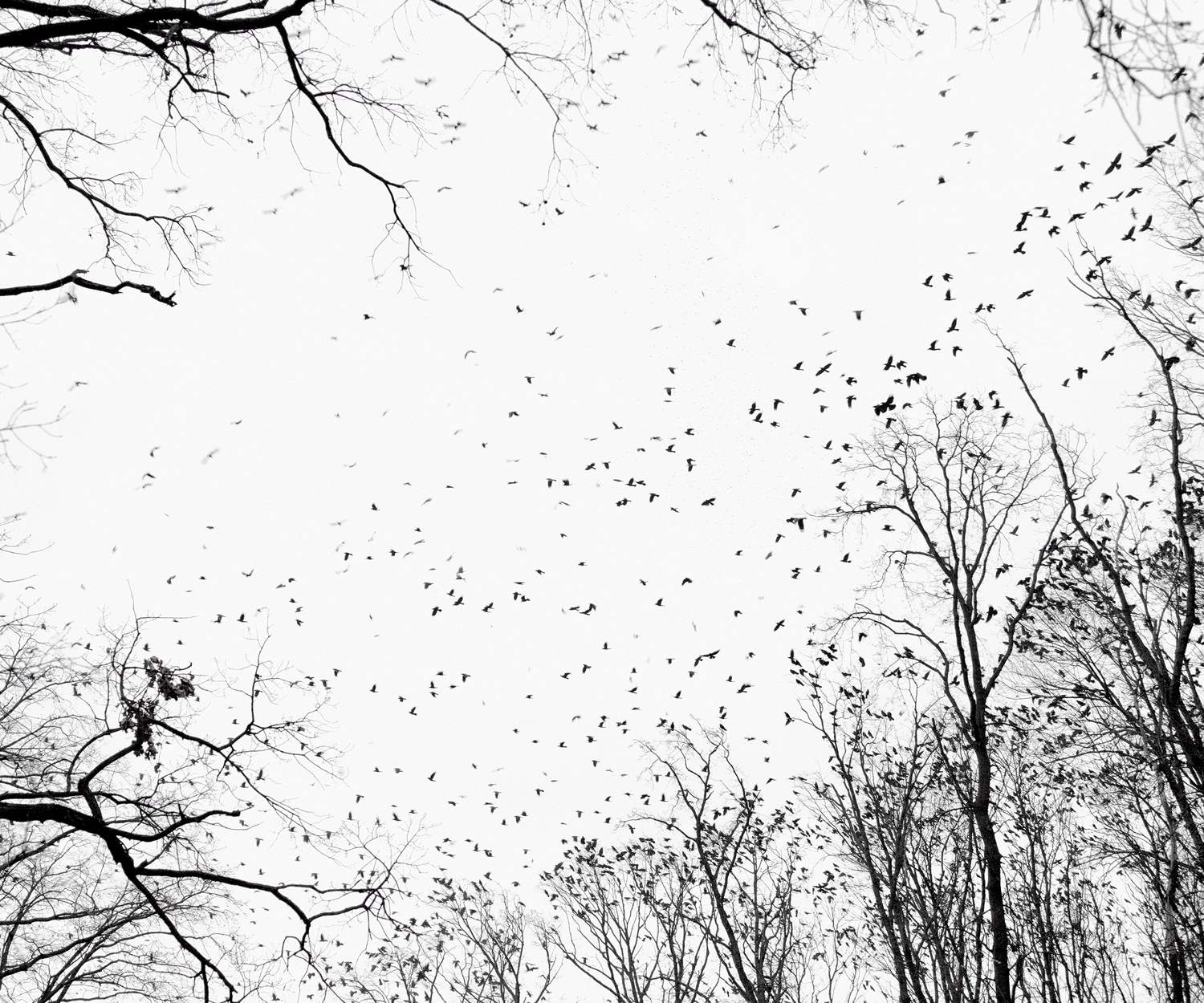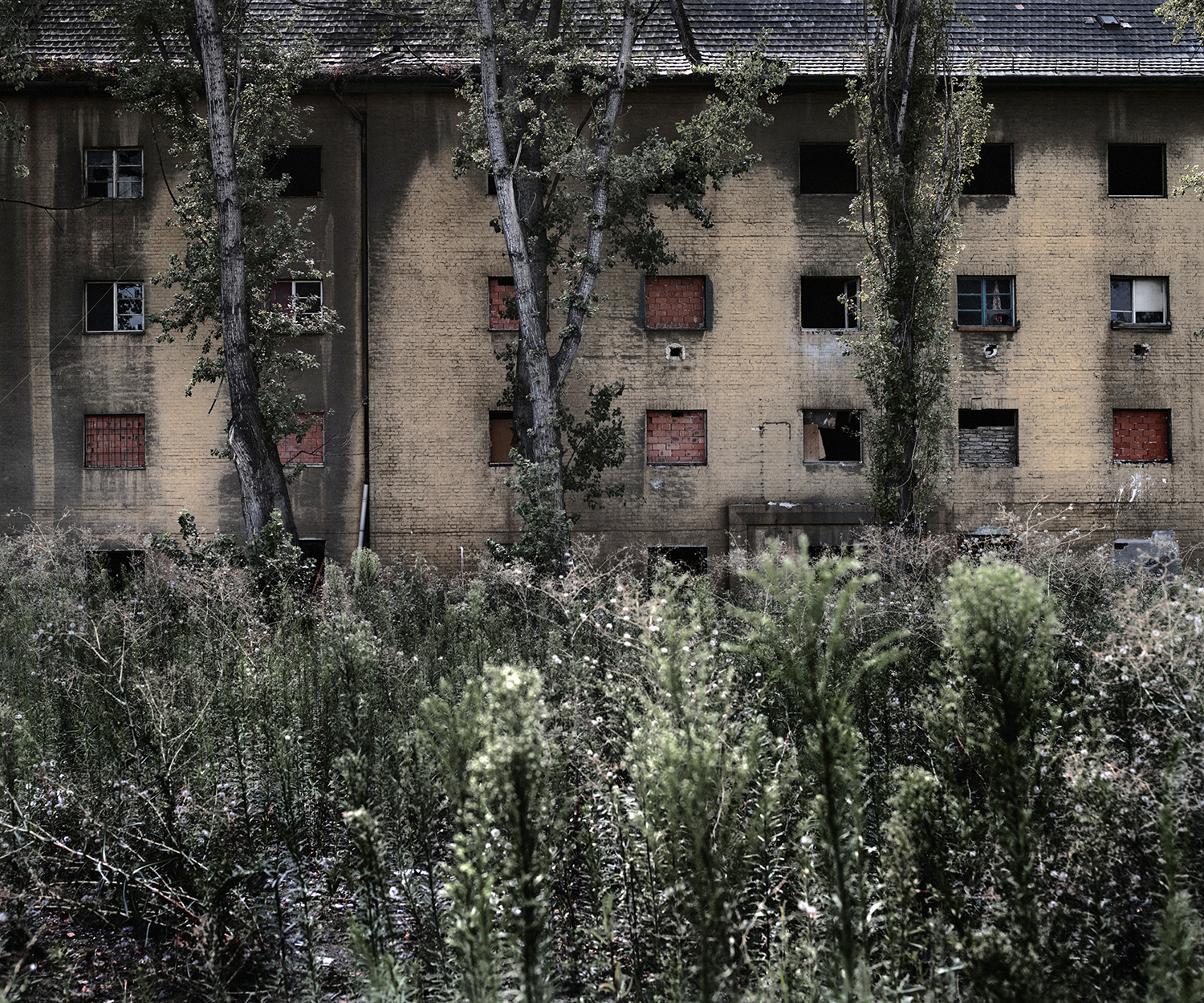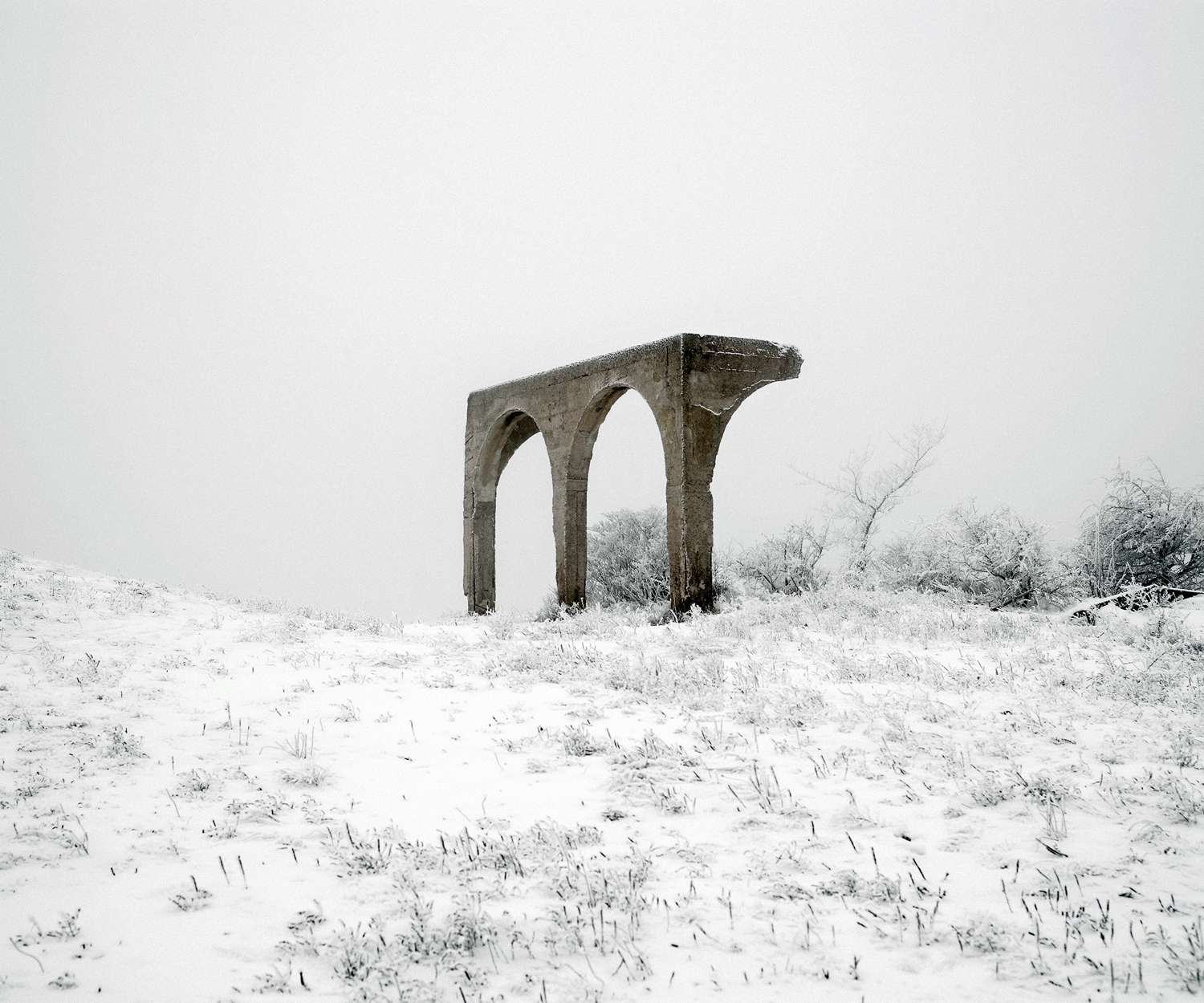Here, Anywhere
2009-2012
The map of Hungary is speckled with capsules of time. During the political transformation twenty years ago, as the country experienced change, it simply forgot about certain places – streets, blocks of flats, vacant sites and whole districts became self-defined enclosures, where today a certain outdated, awkward, longed-to-be-forgotten Eastern Europeanness still lingers. There are places which seem to be at one with other parts of the city in a single space, but their coexistence in time is only apparent: places which decompose in accordance with their own specific chronology, determined by their past, such that what remains would then either be silently reconquered by nature or enveloped by the lifestyles of tomorrow’s generations. Of the inhabitants, who have never fully integrated with majority society, soon only traces will remain, until they, too, disappear in the course of time.
Having experienced the influence of Soviet power, felt directly in everyday life until the political changes as a child, and having comprehended and interpreted its intellectual and social after-effects as an adult, I decided to record the hidden realities which are essential in order to understand the country as it hovers on the borderline between the eastern and western worlds. I do not observe these mini-universes with the aim of mapping the entirety, but rather wish to condense certain arbitrarily chosen details into embodiments of an obsolete existence. The photographic series begun in 2009 examines the typically transitional period and the symbolic characters and locations of post-communist space. The pictures record the historical manifestations of a country which, having shaken off the constraints of foreign powers many times, has successively demonstrated that it is quite incapable of arranging its own power relations and social structure in a manner complying with common European values. It is a country where in recent times the entanglement of competing political interests has resulted in the disappearance of the belief that power can be exercised in a modern, democratic way.
Budapest, 2012
![]()
Here, Anywhere
2009-2012
The map of Hungary is speckled with capsules of time. During the political transformation twenty years ago, as the country experienced change, it simply forgot about certain places – streets, blocks of flats, vacant sites and whole districts became self-defined enclosures, where today a certain outdated, awkward, longed-to-be-forgotten Eastern Europeanness still lingers. There are places which seem to be at one with other parts of the city in a single space, but their coexistence in time is only apparent: places which decompose in accordance with their own specific chronology, determined by their past, such that what remains would then either be silently reconquered by nature or enveloped by the lifestyles of tomorrow’s generations. Of the inhabitants, who have never fully integrated with majority society, soon only traces will remain, until they, too, disappear in the course of time.
Having experienced the influence of Soviet power, felt directly in everyday life until the political changes as a child, and having comprehended and interpreted its intellectual and social after-effects as an adult, I decided to record the hidden realities which are essential in order to understand the country as it hovers on the borderline between the eastern and western worlds. I do not observe these mini-universes with the aim of mapping the entirety, but rather wish to condense certain arbitrarily chosen details into embodiments of an obsolete existence. The photographic series begun in 2009 examines the typically transitional period and the symbolic characters and locations of post-communist space. The pictures record the historical manifestations of a country which, having shaken off the constraints of foreign powers many times, has successively demonstrated that it is quite incapable of arranging its own power relations and social structure in a manner complying with common European values. It is a country where in recent times the entanglement of competing political interests has resulted in the disappearance of the belief that power can be exercised in a modern, democratic way.
Budapest, 2012
2009-2012
The map of Hungary is speckled with capsules of time. During the political transformation twenty years ago, as the country experienced change, it simply forgot about certain places – streets, blocks of flats, vacant sites and whole districts became self-defined enclosures, where today a certain outdated, awkward, longed-to-be-forgotten Eastern Europeanness still lingers. There are places which seem to be at one with other parts of the city in a single space, but their coexistence in time is only apparent: places which decompose in accordance with their own specific chronology, determined by their past, such that what remains would then either be silently reconquered by nature or enveloped by the lifestyles of tomorrow’s generations. Of the inhabitants, who have never fully integrated with majority society, soon only traces will remain, until they, too, disappear in the course of time.
Having experienced the influence of Soviet power, felt directly in everyday life until the political changes as a child, and having comprehended and interpreted its intellectual and social after-effects as an adult, I decided to record the hidden realities which are essential in order to understand the country as it hovers on the borderline between the eastern and western worlds. I do not observe these mini-universes with the aim of mapping the entirety, but rather wish to condense certain arbitrarily chosen details into embodiments of an obsolete existence. The photographic series begun in 2009 examines the typically transitional period and the symbolic characters and locations of post-communist space. The pictures record the historical manifestations of a country which, having shaken off the constraints of foreign powers many times, has successively demonstrated that it is quite incapable of arranging its own power relations and social structure in a manner complying with common European values. It is a country where in recent times the entanglement of competing political interests has resulted in the disappearance of the belief that power can be exercised in a modern, democratic way.
Budapest, 2012



























